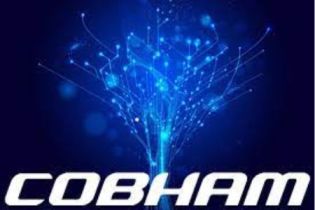During the 1920s and 1930s, air refuelling was only used to assist in setting flight endurance records. Sir Alan Cobham formed Flight Refuelling Ltd on October 29 1934 to focus his efforts on its wider application.
This led, in 1939, to non-stop crossings of the Atlantic, but it was not until the post war adoption of air refuelling by the United States Air Force and, in 1949, the company’s invention of the probe and drogue method, that its full potential was realised. In 1982 Cobham’s air-to-air refuelling system was about to see its toughest test and this would make it centre stage during the Falklands War following the successful ‘Black Buck’ operation for the bombing of Port Stanley airfield on the Falkland Islands.
This gave the attacking Vulcan aircraft sufficient range to successfully complete the round trip of 7,800 miles, involving an astonishing 18 aerial refuelling contacts.It was Sir Alan’s son, Sir Michael Cobham, who after joining the company in 1954 and taking the reins on Sir Alan’s retirement in 1969, first steered the company’s expansion into other markets. As part of this, under Sir Michael, the Group’s Airfield Services division was incorporated as FR Aviation.
This separation bore fruit and for the first time, contractor owned and operated aircraft conducted sophisticated training missions in support of military units. It has since applied this fundamental model to civil maritime electronic monitoring operations and to electronic warfare and other military and government training requirements.Cobham also aimed to take advantage of advances in technology in the field of electronics in other ways.

From telegraph to email, switchboard to satellite communications, the ability to create ever more capable devices in ever smaller packages has influenced how the world now conducts business, transport and national defence. In the late 1980s Cobham laid the foundation for the electronics capabilities that it has today; building its critical technologies, skills, routes to market and customers. Cobham progressively added specialist capabilities including microwave electronics, antennas and radios, and it moved further into the satellite and mobile communications market.
Today the Group’s radar and communication subsystems are at the heart of many of the world’s most capable platforms, aircraft like the F-35 Joint Strike Fighter, the Eurofighter Typhoon as well as advanced naval vessels, satellites and military vehicles. As well as providing communication and other electronic systems, the company has expanded into safety and survival systems including supporting every US astronaut and the International Space Station, regulating oxygen on Airbus and Boeing airliners and providing inerting systems, which mitigate the risk of fuel vapour explosions on commercial and military aircraft.
The Group was renamed Cobham plc in 1994 on the centenary of Sir Alan’s birth and it has over time positioned itself as an innovative technology company with a bright future. Its people have developed next generation Xenon ion satellite propulsion technologies and are squeezing whole Radio Frequency front ends, including sensors, onto a single chip.
Flights demonstrating the capabilities of unmanned aircraft in airspace have taken place, and we have proven the capability of unmanned air-to-air refuelling. Communication products, particularly mobile communications in harsh or difficult environments, have been another core capability for Cobham. This has led, for example, to British mountaineer Daniel Hughes achieving a world first when he broadcast himself from the summit of Everest, using the Cobham EXPLORER 700 satellite communication system.
Cobham is working on tomorrow’s technologies today – keeping people safe, solving challenging problems, and continuing a track record of over 80 years of investment in innovation.
Source : Indonesia Industrial Parts – Measurement, Equipment, Electrical & Control (inaparts.com)

